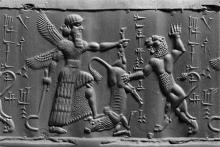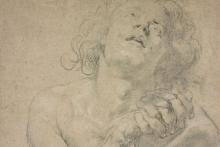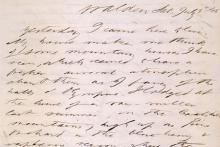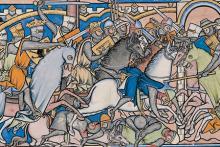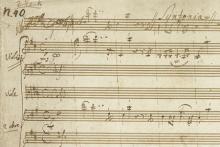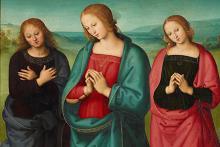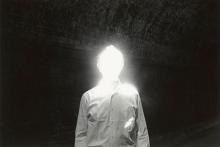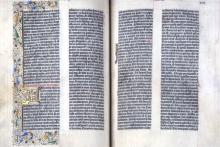Plan your visit. 225 Madison Avenue at 36th Street, New York, NY 10016.
Plan your visit. 225 Madison Avenue at 36th Street, New York, NY 10016.
Search
Highlights
-
The Morgan's seals collection is one of the most distinguished in the United States and among the best known in the world. Generally only an inch in height, engraved seals are among the smallest objects ever produced by sculptors.
-
Drawings & Prints
Ranging from preparatory studies and sketches to finished works of art, the nearly twelve thousand drawings in The Morgan Library & Museum's collection span the fourteenth through twenty-first centuries. -
Literary & Historical Manuscripts
The Morgan's collection of literary and historical manuscripts includes complete manuscripts and working drafts of poetry and prose as well as correspondence, journals, and other documents of important British, European, and American authors, artists, scientists, and historical and political figures from the fifteenth through the twentieth centuries. The handwritten documents in the collection preserve the process of human thought and creativity—from mind to pen to paper—with an immediacy and power lacking in texts produced electronically.
-
Medieval & Renaissance Manuscripts
When Pierpont Morgan acquired his first medieval manuscripts at the end of the nineteenth century, he laid the foundation for a collection whose quality would rank among the greatest in the world. Since Morgan's death in 1913, the collection has more than doubled. Spanning some ten centuries of Western illumination, it includes more than eleven hundred manuscripts as well as papyri. To this should be added the Glazier, Heineman, Bühler, Stillman, and Wightman manuscripts, which include more than two hundred more items.
-
Music Manuscripts & Printed Music
The Morgan houses one of the world’s finest collections of music manuscripts and rare printed scores. In addition to numerous musicians’ letters and first editions of scores and librettos, the holdings include one of the the largest collections of Mahler manuscripts anywhere and substantial holdings of Mozart, Schubert, Chopin, Brahms, Debussy, Richard Strauss, Stravinsky, Ravel, and Schoenberg. Forty thousand collection items span six centuries and many countries. The Morgan’s materials relating to the lives and works of the dramatist William S. Gilbert and the composer Arthur S.
-
Paintings & Art Objects
The paintings and art objects that remain in The Morgan Library & Museum were, with a few exceptions, acquired by its founder Pierpont Morgan. The collection represents the merest fraction of his original holdings, most of which were sold or given away following his death in 1913. The largest group, chiefly consisting of several thousand ancient and medieval objects, was given to the Metropolitan Museum of Art in 1917. The Wadsworth Atheneum in Morgan's native city, Hartford, was another important beneficiary.
-
Photography
The Morgan collects visually arresting photographs from fields of endeavor that the medium has helped to invent or to reinvent, including (to name but a few) advertising, art, book design, cartography, cinema, criminology, exploration, family history, glamour, journalism, medicine, politics, sports, and zoology. -
Printed Books & Bindings
Diversity and quality have been hallmarks of this collection, with works spanning Western book production from the earliest printed ephemera to important first editions from the twentieth century. The Morgan Library & Museum's holdings encompass a large number of high points in the history of printing, often exemplified by a lone surviving copy or a copy that is perfect in every way. Areas of exceptional strength include incunables, early children's books, fine bindings, and illustrated books.

